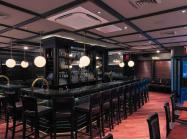How can restaurants retain and attract employees while also providing a top-notch experience for each and every guest?
According to recent data, annual turnover rates in the restaurant industry, although always high, are now sitting at an estimated rate of 200 percent.
It’s no secret that the restaurant industry (and hospitality in general) has gone through massive ups and downs over the past several years, and as a result, restaurant owners like myself have had to rethink how to evolve our business and approach to attract and retain talent. The reality is that for many in hospitality, full- and even part-time jobs in other industries are, in many cases, able to offer more attractive employee benefits, which, as referenced from the earlier statistic, has led to record-high staffing shortages and high turnover for our industry.
The end result for restaurants, in particular, has been somewhat of a domino effect—a lack of good talent greatly affects the experience for guests, which in turn impacts the success of a restaurant.
The solution is for restaurants, and all businesses, to rethink and evolve their approach to employee engagement and retention that focuses on delivering the experience for customers. For Ballyhoo, the changes we have made are paying off: we are about to open our sixth new restaurant concept in three years and have consistently been recognized as a top destination for great food and service, and are full-staffed with over 600 employees.
So what can companies in hospitality (and beyond) do to help retain and attract employees while also providing a top-notch experience for each and every guest? Here are four strategies that are working:
1. Adjusted employment packages. While I realize from a financial perspective it’s not always an option for businesses, restaurants in particular, to be able to offer attractive employment packages, the reality is that things have changed drastically over the past few years in terms of employment options for waitstaff. Simply put, if you don’t offer an enticing package, another restaurant or business will. Offering enticing employment packages is also a way to ensure you attract the best talent. We offer a comprehensive package, including health benefits for full-time team members, and we match 3 percent on our 401k for everyone up to $1,000. It is an easy way to say we care about you and your long-term happiness.
2. A unique on-site staffing strategy. Once you have a strong staff in place, it’s time to look at how you are elevating the customer experience. At Ballyhoo, we have two, sometimes three or four, managers on the floor at each of our restaurants to deliver the best possible service to our diners while also supporting our staff. Though investing in a second manager can be costly, we have found it makes a world of difference with diners and employees in terms of happiness and the overall experience. Whether it’s a restaurant or another type of business, cover your bases - literally - by ensuring that team members feel supported first and foremost and that your customers feel appreciated and taken care of.
3. Ongoing culinary team training. Educating staff about your menu or business offering shouldn’t be a one-and-done. For example, whenever the menu changes at one of our restaurants, we conduct a culinary training session with our team. Just as potential employees have a lot of options, so do diners, and it’s instantly obvious when a server isn’t knowledgeable about the menu. With inflation affecting everything from food to gas prices, people are being particularly careful about how they spend their money. And when it comes to dining out, guests expect a top-notch experience and will go elsewhere if they don’t receive one with you. The same thing applies to businesses in other industries.
4. Communication huddles focused on continued team growth and expertise. Restaurant owners are running a business, and it should be treated as such by staff. One thing we do at all of our locations is a “communication huddle” to discuss important details: Who will be dining that evening? What special occasions are being celebrated? What is the strategy for walk-in guests so we don’t have to turn anyone away? In essence, you need to create a playbook for each and every scenario to ensure that all waitstaff – from front-of-house to the kitchen– are aware and make each guest feel special. Above all, it’s important for every business to evaluate what is being done to differentiate from competitors. How are you letting guests know that you appreciate their business?
These lessons apply not only to restaurants and hospitality but to a plethora of other industries as well. And that’s because the overarching theme comes down to employee happiness and the customer experience: If your business is struggling to attract and retain employees, you need to rethink your approach to employee support. After all, doing so will translate into a better experience for your employees, leading to a low workforce turnover, happier teams, and, ultimately, repeat guests.
Jonathan Farrer is the president and COO of Ballyhoo Hospitality. As president and COO, Jon supports the expansion of Ballyhoo and is an integral part of everything from concept development to operations. He has a proven track record in the industry, having led restaurant groups from LA to Chicago. He was part of the visionary team that brought the Ballyhoo brand to life, and brings a particular focus on establishing key partnerships that serve as the foundation for current and future growth.

















